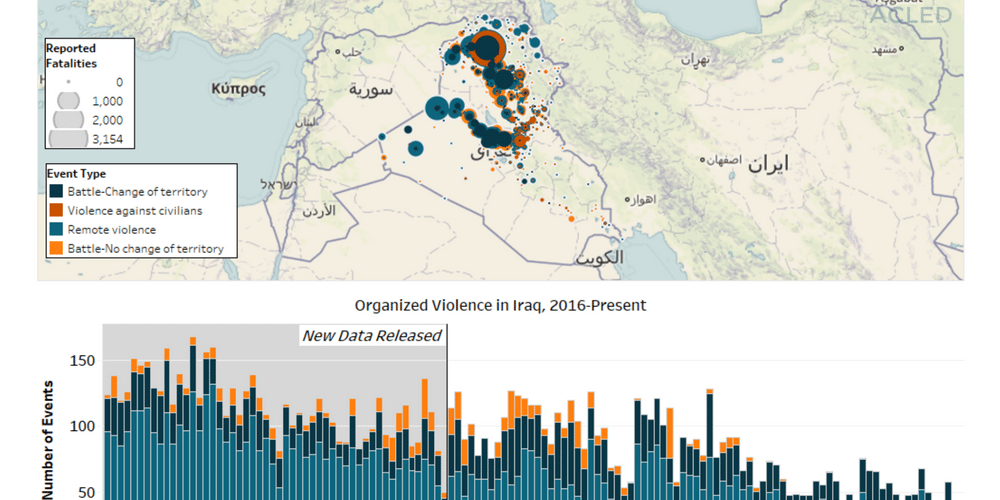In 2016, the groundwork was laid for the dramatic defeat of the Islamic State in 2017. During offensives throughout the year, a number of towns in western Iraq in particular were recaptured — most notably the strategic town of Ar Rutba (which commands Iraqi border crossings into both Jordan and Syria) in May 2016, and Fallujah in June 2016. Iraqi forces, supported by allied militias and airstrikes by the members of the Global Coalition Against Daesh, also captured a number of key towns and villages on the approach to Mosul, including areas of Hammam al-Alil, Qayyara, and Hamdaniya, which would act as a springboard for the offensive to recapture Mosul.
The offensive to retake Mosul began in mid-October 2016, and lasted into July 2017, contributing to the roughly static number of events in the country during this period. This fighting involved high numbers of airstrikes and prompted the slight increase in the number of events involving a change in territory, as neighbourhoods in Mosul were regularly recaptured by Iraqi forces and supporting militias. More broadly, 2016 in Iraq represented an intense reliance on airpower to “degrade and defeat” the Islamic State (Congressional Research Service, February 2, 2017), with well over 4,000 of the roughly 6,500 total events recorded having been remote violence. This can be contrasted to 2017 where events of remote violence were closer to half of all events at 2,600 out of roughly 5,200 total events. Consequently, Iraq in 2016 was also marked by a lower number of battles compared to 2017. The higher number of battles in 2017 can be understood to represent the culmination of the momentum developed against the Islamic State in 2016.
AnalysisCivilians At RiskConflict MonitoringMiddle EastPressRemote ViolenceRioting And ProtestsViolence Against Civilians







